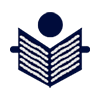


18 Feb 2025
// HEALTH CANADA
https://recalls-rappels.canada.ca/en/alert-recall/cisatracurium-besylate-injection-usp-multidose-level-degradation-product-benzaldehyde

27 Aug 2024
// FDA
https://www.accessdata.fda.gov/scripts/cder/daf/index.cfm?event=overview.process&ApplNo=216539

08 Mar 2024
// FDA
https://www.accessdata.fda.gov/scripts/cder/daf/index.cfm?event=overview.process&ApplNo=216538

09 Jun 2023
// FDA
https://www.accessdata.fda.gov/scripts/cder/daf/index.cfm?event=overview.process&ApplNo=217725

30 Jan 2023
// PRESS RELEASE
http://cfpharma.hu/development-of-manufacturing-technology-for-three-pharmaceutical-ingredients/

11 Mar 2022
// FDA
https://www.accessdata.fda.gov/scripts/cder/daf/index.cfm?event=overview.process&ApplNo=212432
